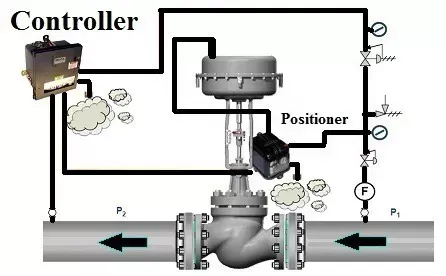Notifications

4 minutes, 56 seconds
-28 Views 0 Comments 0 Likes 0 Reviews

Control valve positioners are vital components in regulating and controlling industrial processes, ensuring that control valves respond quickly and accurately to changes in process variables like temperature, pressure, or flow. Here’s a deeper dive into the function, types, and benefits of control valve positioners:
A Control Valve Positioner is a device designed to adjust the position of a valve's actuator so that the valve's position accurately reflects the desired set point for a specific process variable. These variables could be pressure, temperature, or flow, and the positioner ensures that the valve stays in the right position to maintain process stability.
In older systems, control valves operated directly from a signal sent to the actuator, which could be slow and less precise. The positioner enhances this by providing real-time feedback and making adjustments to ensure precise valve control.
The positioner is typically installed directly onto the actuator. It continuously monitors the valve’s stem travel (for linear valves) or the degree of rotation (for rotary valves). When a process variable deviates from the set point, the controller sends a signal to the positioner, which then adjusts the actuator to move the valve to the correct position.
There are several key operational steps:
Input: The process controller sends either an electrical or pneumatic signal to the positioner.
Adjustment: The positioner adjusts the actuator, moving the valve accordingly.
Continuous Monitoring: The positioner constantly checks and adjusts the valve’s position to stay within the desired range.
Control valve positioners come in three main types:
Pneumatic Valve Positioner:
Uses pneumatic signals (air pressure) to control the actuator.
Common in simpler or older systems where electronic control is not needed.
Electro-Pneumatic (EP) Valve Positioner:
Converts electrical signals (usually 4-20 mA) from the controller into a pneumatic output for the actuator.
Offers a more sophisticated and precise level of control than pneumatic-only systems.
Digital Valve Positioner:
Uses digital communication protocols (like HART or FOUNDATION Fieldbus) for precise control.
Offers advanced diagnostics, better accuracy, and the ability to remotely configure the system.
Valve positioners offer several key advantages, particularly in processes where small fluctuations in variables can significantly impact safety or product quality:
More Accurate Control: Valve positioners ensure high precision, especially at the lower portions of the valve stroke where errors are more common.
Faster Response Time: They enable the valve to respond quickly to changes in process conditions, minimizing downtime and inefficiencies.
Consistent Valve Positioning: Even with varying pressures, valve positioners help maintain consistent valve movement, ensuring system stability.
Increased Flexibility: They provide flexibility in system configuration, supporting various actuator types and control actions.
Minimized Effects of Friction and Hysteresis: By continuously adjusting, positioners mitigate the impact of friction and hysteresis, ensuring smoother and more reliable operation.
Electro-Pneumatic Valve Positioner: Converts an electrical signal (e.g., 4-20 mA) to a pneumatic output, moving the actuator accordingly.
Pneumatic-Pneumatic Valve Positioner: Operates solely on pneumatic signals to control the valve actuator.
Control valve positioners are crucial for ensuring that industrial processes operate smoothly and efficiently. They offer increased accuracy, speed, and stability in valve control, playing a central role in maintaining optimal process conditions. As industries move toward more automated and precise systems, the importance of valve positioners in process control will continue to grow, helping to reduce operational risks, improve product quality, and enhance overall system performance.Know more about Google SEO Directory

